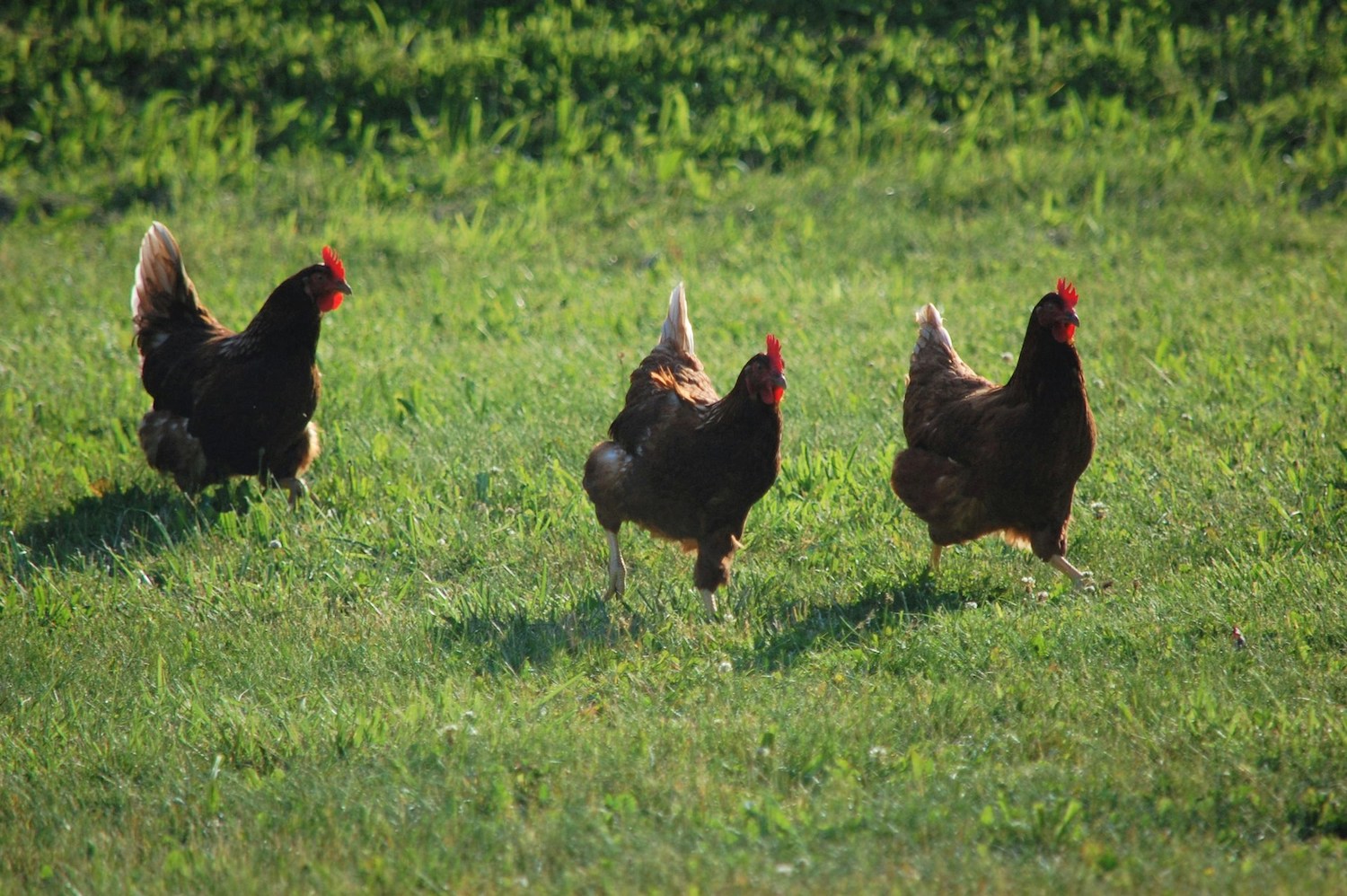Culinary Compassion on the Buddhist Path
A scholar-practitioner explores conflicting stances on eating meat across Buddhist traditions The post Culinary Compassion on the Buddhist Path appeared first on Tricycle: The Buddhist Review.

Browse any online Buddhist forum, and you’ll inevitably encounter contentious discussions about eating meat. It’s a perennial ethical concern that doesn’t go away. The question “Do I need to be vegetarian?” is met with affirmative and negative replies from practitioners of different traditions. Even for those of us who have practiced for years, the question of meat eating can be tricky. It is true that the historical Buddha ate meat and permitted his alms-reliant monastic community to do so with conditions. As a result, vegetarianism is not consistent among Buddhist communities. Traditions grounded in the Pali canon tend to worry about it less than traditions grounded in the Mahayana texts. But our situation today is vastly different from what it was at the time of the Buddha or even a few hundred years ago. How should we consider the Buddhist stance on eating meat in today’s agricultural context?
Differing Ideals of Compassion
When the Buddha allowed his monastic followers to eat meat, he did so only under certain conditions. In the early Buddhist community, monastics relied on the laity to provide them with food, shelter, and other necessities. Giving these necessities to the monastic community was one of the principal ways householders could generate merit and ensure good rebirth. Maintaining this merit economy was paramount to the success of the monastic sangha.
Rejecting meat in this early Buddhist context would create problems in the monastic and lay communities. It would mean that a householder who had killed and cooked a chicken for their meals that day would not be able to donate to the monks and accrue positive karma. Likewise, if nuns and monks rejected food offerings, it would reflect poorly on the monastic community. Because of this conundrum, the Buddha rejected the request made by Devadatta, his cousin and disciple, to make the sangha vegetarian.
However, this rejection of vegetarianism did not mean that all meat was permissible. Instead, the Buddha mandated that monastics consume only meat that was pure in three ways. The animal must not have been 1) seen to be killed for them, 2) heard to be killed for them, or 3) suspected to be killed specifically for them. This rule was put in place so that the laity would not see monastics coming, want to make an exceptionally luxurious offering, and kill an animal for their sake. The Buddha, therefore, took pains to ensure that his followers were not the cause of an animal being killed for food, while permitting them to eat meat if they were free of karmic connections to the animal’s death. Traditions that adhere to the Pali canon usually follow this view.
When we turn to the Mahayana tradition, the goal of practice shifts from liberating oneself to liberating all sentient beings (including nonhuman animals) from suffering (dukkha). As a result, compassion becomes the most valued virtue and a central component in how Buddhists relate to the more-than-human world. But this raises some significant issues: How can you vow to liberate all sentient beings and still kill them for food? And how can you generate compassion for nonhuman animals while eating them? In the Mahayana scripture, the Buddha emphatically answers these questions: “You can’t.”
In the Lankavatara Sutra, the Buddha points out that every animal we come across has been our mother, father, sibling, or friend in a past life. Since samsara, the cycle of birth and death, is beginningless, and we have had innumerable past lives, this relationship is simply a statistical fact in Buddhist cosmology. He thus appeals to emotion and asks his followers to extend the same care we have for family and friends in this life to all beings (an approach to animal ethics that parallels what ecofeminist author Lori Gruen has called “entangled empathy”).
In the Mahaparinirvana Sutra, the Buddha states that “eating meat will sever the lineage of compassion,” hindering our ability to cultivate the wish to relieve the suffering of nonhuman animals. And, the Lankavatara Sutra states that “anyone who recognizes that a being is alive and yet kills and eats them anyway cannot develop compassion.” In the language of contemporary psychology, trying to develop compassion for all sentient beings while eating them creates a cognitive dissonance that restricts our ability to apply this compassionate mode to all.
Perhaps most importantly, the Buddha also states that it’s inappropriate to eat meat because doing so will create a demand for the killing of sentient beings. In what might today be called a market-based argument, the Buddha states, “If someone gives up meat, then animals will not be killed. This is because innocent beings are usually killed for money; other reasons are rare.” Recognizing that we are the demand from which the supply originates, the Buddha makes a causal argument against meat consumption. While the threefold purity rule made efforts to distance the meat eater from the butcher karmically, the Mahayana teachings recognize how eating meat in a market economy necessitates a causal connection between the eater and the butcher.
We have seen two competing approaches to eating meat: first, permission from the Pali canon on the condition that the animal is not explicitly killed for the eater; and second, a prohibition from Mahayana texts. Today, most of us do not go on alms rounds for food, and most food comes to us through factory farming, where there are several degrees of separation between farmers, butchers, and our purchase at the supermarket. How, then, do we make sense of how we should eat?
The Example of Tibet
Thankfully, our contemporary context is not the first in which this ambiguity has appeared. Throughout Tibet’s history, Buddhist thinkers have sought to make sense of these competing scriptural traditions by reflecting on the relevance of the teachings to their situation. Tibetan monastics did not go on alms rounds but purchased their meats from butchers that typically set up shop outside monasteries. These butchers were not killing meat for particular buyers but for a general customer base (“the market”), leading some Tibetan thinkers to claim that this meat met the rule of threefold purity and was fit for consumption.
One such thinker was the Gelugpa philosopher Khedrup Jé (1385–1438). In a text titled “Polishing the Jewel of the Sage’s Teachings,” Khedrup Jé addresses the prohibitions on meat eating in the Lankavatara and Mahaparinirvana sutras and defends eating meat through an appeal to threefold purity. The most interesting point he raises is the karmic difference between the butcher and the eater. He uses a scholastic understanding of karmic theory to try to show the absurdity of the claim in the Lankavatara that the eater of meat and the killer of an animal incur the same karmic debt. As long as you don’t go to the market and buy meat out of an intention to deliberately contribute to the demand for meat and have someone kill an animal for you, then the rule of threefold purity applies. For Khedrup Jé, supply and demand market dynamics are therefore secondary to how karma ripens in our lives; thus, meat consumption is permitted.
Many Tibetans, however, disagreed. Of these thinkers, no one was as forceful in their critique of meat as the yogi Shabkar Tsokdruk Rangdrol (1781–1851). In The Nectar of Immortality, Shabkar dismisses Khedrup Jé’s karmic loopholes and provides a straightforward analysis of economic supply and demand concerning monastic meat eating. He writes that butchers will set up shop outside of the monasteries if they know monks eat meat. When others see their profit, more butcheries will open, and more animals will be killed. In addition, this animal-killing profession will then be passed on from generation to generation. For Shabkar, the killing of animals for food happens for a single reason: “The monastic community and others eat meat. Who, therefore, behaves in a more consistently evil manner than they?” Shabkar pulls no punches—if you eat meat, then you create the cause for killing animals. This echoes the Mahayana market-based critique: where consumers and producers buy and sell meat, there cannot be threefold purity.
Threefold Purity and the Factory Farm
In many ways, contemporary agriculture is governed by the same market mechanics as in the Tibetan context. But in many ways, the conditions of nonhuman animals in our agricultural system have changed dramatically. In Shabkar’s time, sheep, goats, and yaks lived out their lives grazing on the grasses of the plateau, supervised by their herders until killed. Nowadays, 99 percent of the animal products consumed in America come from factory farms, despite 49 percent of Americans supporting the ban on factory farming and 33 percent supporting a ban on animal agriculture altogether. These factory farms sentence cows, pigs, chickens, and other animals to lives of cramped cages, disease, neglect, and abuse. And yet the public image that the animal agriculture industry presents is extremely sanitized, with 98 percent of these factory farms classified as “family farms” and with unrealistically idealized images—like that of a happy cow grazing on a lush green field—appearing on the packaging of most animal products.
Do we suspect that, by patronizing this system, these animals are killed specifically for us? We usually consider the animals we consume in the abstract. For example, when we read that roughly 725 million chickens are killed for Super Bowl festivities in America alone, we likely don’t think that these birds were killed specifically for us even if we are sitting down with a plate of buffalo wings as we watch the game. However, we might see things differently if we look at estimated individual statistics. Although calculating average meat consumption is difficult, Vegetarian Calculator estimates that the average American eats roughly 200 animals each year. If we factor in the egg and dairy industry, the number of animal deaths per person rises to around 350 per year, or nearly one animal per day. Using this rough estimate, when we quantify our eating habits, market dynamics no longer obscure our influence, making it more difficult to consider these foods pure.
While contemporary farming methods may differ from those of 19th-century Tibet, we can apply Shabkar’s critique to our situation. Just as butchers set up their shops outside of monasteries because there is a monastic demand for meat, so too are animals killed because of market demand. As the Lankavatara states: “People pay money for meat, causing animals to be killed for profit. [Thus] both the killer and the buyer own this sinful karma.” For practitioners who wish to distance themselves from this “sinful karma,” it might behoove us to do our best to avoid this dynamic.
I first became vegetarian when I started taking Buddhism seriously and thinking through the implications of ideas like compassion for all sentient beings and rebirth. But wherever we are on the Buddhist or vegetarian path, contemplating and untangling threefold purity in our inherited Buddhist traditions can help us to create a more compassionate sangha and, perhaps, a more compassionate world.

 Astrong
Astrong 































